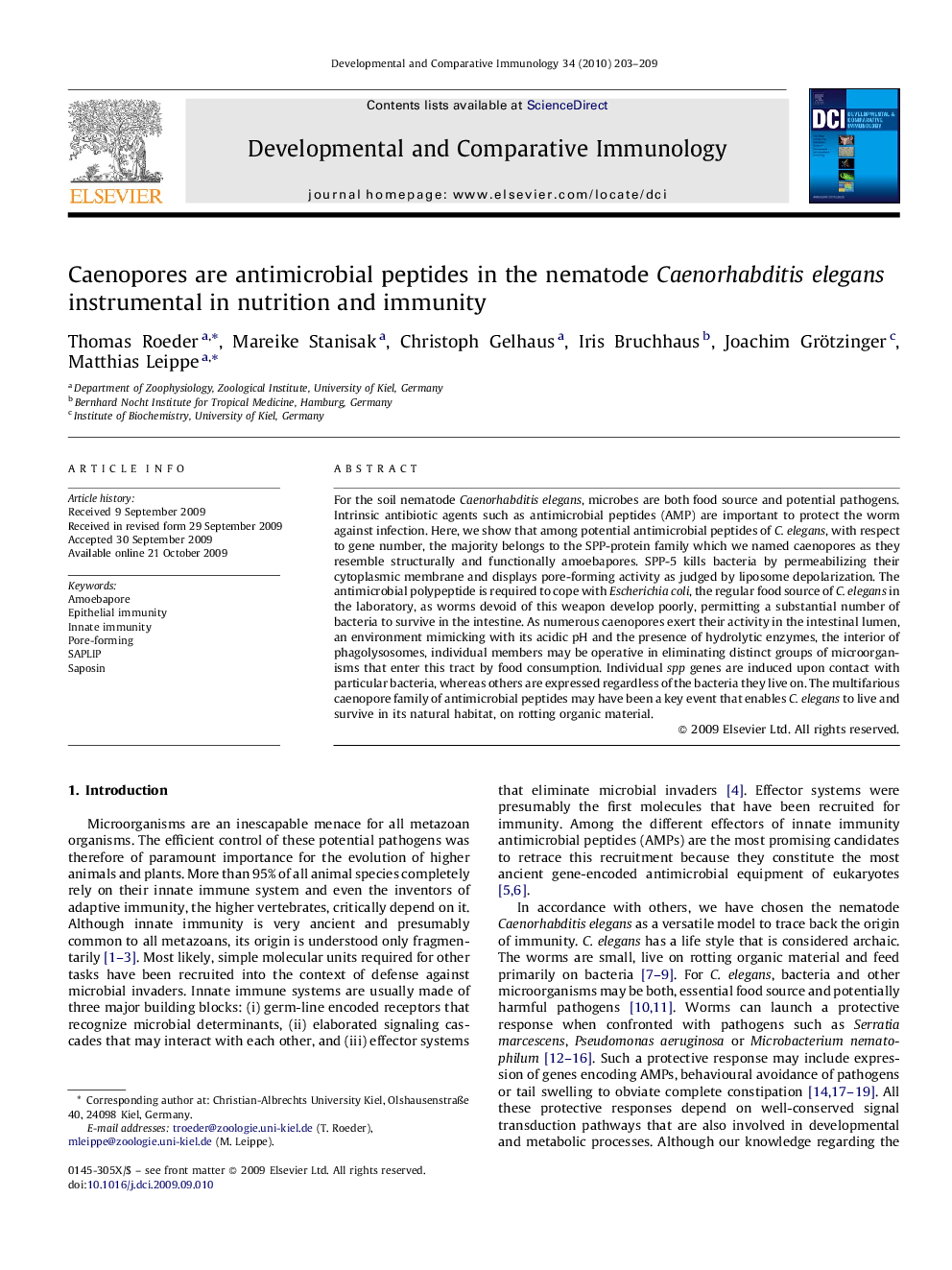| کد مقاله | کد نشریه | سال انتشار | مقاله انگلیسی | نسخه تمام متن |
|---|---|---|---|---|
| 10971693 | 1106509 | 2010 | 7 صفحه PDF | دانلود رایگان |
عنوان انگلیسی مقاله ISI
Caenopores are antimicrobial peptides in the nematode Caenorhabditis elegans instrumental in nutrition and immunity
دانلود مقاله + سفارش ترجمه
دانلود مقاله ISI انگلیسی
رایگان برای ایرانیان
موضوعات مرتبط
علوم زیستی و بیوفناوری
بیوشیمی، ژنتیک و زیست شناسی مولکولی
زیست شناسی تکاملی
پیش نمایش صفحه اول مقاله

چکیده انگلیسی
For the soil nematode Caenorhabditis elegans, microbes are both food source and potential pathogens. Intrinsic antibiotic agents such as antimicrobial peptides (AMP) are important to protect the worm against infection. Here, we show that among potential antimicrobial peptides of C. elegans, with respect to gene number, the majority belongs to the SPP-protein family which we named caenopores as they resemble structurally and functionally amoebapores. SPP-5 kills bacteria by permeabilizing their cytoplasmic membrane and displays pore-forming activity as judged by liposome depolarization. The antimicrobial polypeptide is required to cope with Escherichia coli, the regular food source of C. elegans in the laboratory, as worms devoid of this weapon develop poorly, permitting a substantial number of bacteria to survive in the intestine. As numerous caenopores exert their activity in the intestinal lumen, an environment mimicking with its acidic pH and the presence of hydrolytic enzymes, the interior of phagolysosomes, individual members may be operative in eliminating distinct groups of microorganisms that enter this tract by food consumption. Individual spp genes are induced upon contact with particular bacteria, whereas others are expressed regardless of the bacteria they live on. The multifarious caenopore family of antimicrobial peptides may have been a key event that enables C. elegans to live and survive in its natural habitat, on rotting organic material.
ناشر
Database: Elsevier - ScienceDirect (ساینس دایرکت)
Journal: Developmental & Comparative Immunology - Volume 34, Issue 2, February 2010, Pages 203-209
Journal: Developmental & Comparative Immunology - Volume 34, Issue 2, February 2010, Pages 203-209
نویسندگان
Thomas Roeder, Mareike Stanisak, Christoph Gelhaus, Iris Bruchhaus, Joachim Grötzinger, Matthias Leippe,